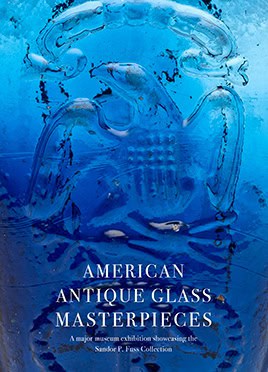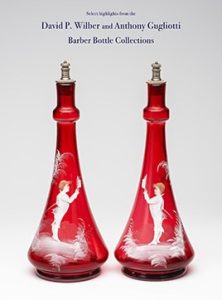FLORIDA ADVERTISING JUGS
The Proprietors & Their Jugs
By David Kyle Rakes & Corey Lee Stock
Published by Peachridge Collections, LLC., Ferdinand Meyer V (Designer)
52 jugs from 53 jug proprietors! Biographical sketches with their jugs and advertisements. This is the first complete Florida jug book ever! Four-Color, Soft Bound, 8.5 x 11, 174 pages, Includes glossary and index. The book costs $50 plus $4 shipping & handling. Total $54. Send check or money order to: David Kyle Rakes, P.O. Box 2706 Belleview, FL 34421 . Note: The book is out of stock and will need to be printed again. Any questions: Cell phone: 352.817.5136, Email: Barakes123@gmail.com. Read PDF.
“Stoneware advertising jugs are not run-of-the-mill antique collectibles. However, their method of manufacture, utilitarian use, and the advertising of the proprietor’s name and location give them historical value and make them desirable.
“Around the middle of the 19th century, potters discovered a salt-glazing process that gave clay jugs, crocks, churns, bowls, and pitchers a glass-like finish that became known as stoneware. This stoneware pottery, named after its “stone-like qualities,” is hard and non-porous. By firing the clay objects in a kiln at temperatures of 2,000 to 2,400 degrees, hotter than lava from a volcano, and then “throwing buckets of mined raw salt at just the right moment” into the mix, the outside of the pottery vitrified or turned to glass.
“Stoneware replaced much of the red clay or earthenware that came before. It was brittle, porous, and ineffective for storing liquids and prepared foods. While earthenware was mostly used in food preparation and consumption, the primary function of stoneware was storage. Florida stoneware jugs made from 1880 to pre-prohibition in 1920 are the subjects of this book. The early jugs are primarily ovoid in shape and made by turning on a wheel. Making a clay jug turned or spun on a wheel involves one piece of clay manipulated precisely with two hands. The latter jugs are called stackers because they are stacked in the kiln. The jugs have a small ledge around them that permits the bottom of a jug to rest between the ledges of two other jugs, thus filling the kiln with more jugs.
“These jugs were made in two pieces, the bottom and top, made separately by pushing the correct thickness of clay into a mold and then joining the two pieces together. The jugs were made with a cylinder bottom to accommodate the correct gallons and with a dome or cone top and handle. The cone or dome tops were sometimes painted with a ceramic slip to make them darker than the bottom portion. Stoneware jugs were also slip-stenciled to mark the name and city of the proprietor or slip-brushed to add decoration. At least one Florida jug used cobalt oxide to make a blue floral design. Other Florida jugs were scratched (sometimes called incised) or stamped when the clay was soft to provide advertising.
“A few embossed Florida advertising jugs were made at a glass factory and are part of this work. However, glass vessels made for spring water and mini whiskey jugs that were mostly promotional samples were omitted from this compilation. Moreover, if the container was not of the general jug shape, it was not included. 53 jug proprietors are listed in this work. Including the various markings and sizes, the jugs would number over one hundred. The jugs mostly held whiskey at one time, but a few contained quinine, wine, spring water, distilled water, extract, syrup, and maybe even orange juice.
“Each jug proprietor has been researched and given a biographical sketch, many for the first time. These sketches were made from online newspapers, family records, and genealogy sites. Numerous collectors provided jug pictures that are shown with the proprietor’s sketch. An astounding 49 of the 53 Florida jugs found and included here have pictures! References are given to those who would like to find additional details or to know where my information came from.
“I discovered some interesting and industrious people by researching pre-pro Florida advertising jugs. Some of these jug proprietors were immigrants: fourteen were from Germany, two were from Italy, two from England, and one each from Canada, Poland and France. The home-grown jug proprietors were mainly from Florida and Georgia, with a few from New England, North Carolina and Kentucky. Many of them had a liquor house and a saloon; a few had hotels and restaurants, as well as grocery stores and billiard parlors. I was surprised at how common businessmen could live for years in hotels back then instead of in a home. I also found it interesting that whiskey dealers generally sold cigars, and today they are still sold at many liquor stores in the South.
“Some of these liquor dealers with jugs were brothers and passed down the business to their children and grandchildren. Some offered artwork for free or free maps of the United States with whiskey orders. One proprietor sold a suitcase of 12 full quarts of whiskey so the customer could receive whiskey secretly. Others branched out into the orange growing business, motion picture business, selling earthenware, or promoting heavyweight fights. One founded the first telephone company in Jacksonville, while another laid out and founded the town of Bayport. Still, another built steamboats and put copper roofs on freight and passenger trains. At least six were veterans of the Civil War, and three were legislators. Many more interesting details from life to death are given in the biographical sketches of these jug proprietors. A look back in time at these jugs and the men who had them made will lend to more discoveries of our notable past. I know Florida advertising jugs have made my life a “full gallon” worth of fun.” – David Kyle Rakes










